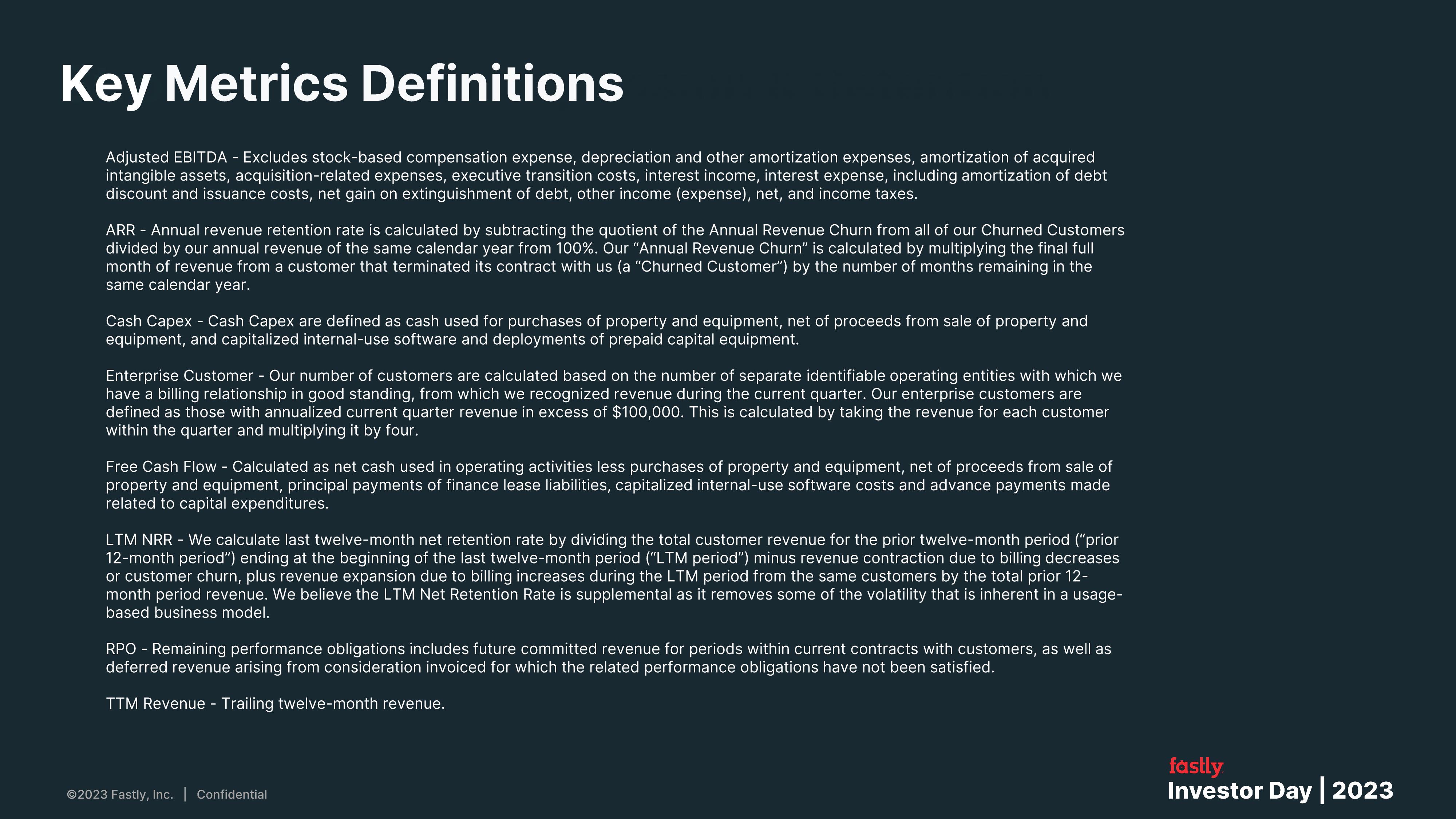Fastly Investor Day Presentation Deck
Key Metrics Definitions
Adjusted EBITDA - Excludes stock-based compensation expense, depreciation and other amortization expenses, amortization of acquired
intangible assets, acquisition-related expenses, executive transition costs, interest income, interest expense, including amortization of debt
discount and issuance costs, net gain on extinguishment of debt, other income (expense), net, and income taxes.
ARR - Annual revenue retention rate is calculated by subtracting the quotient of the Annual Revenue Churn from all of our Churned Customers
divided by our annual revenue of the same calendar year from 100%. Our "Annual Revenue Churn" is calculated by multiplying the final full
month of revenue from a customer that terminated its contract with us (a "Churned Customer") by the number of months remaining in the
same calendar year.
Cash Capex - Cash Capex are defined as cash used for purchases of property and equipment, net of proceeds from sale of property and
equipment, and capitalized internal-use software and deployments of prepaid capital equipment.
Enterprise Customer - Our number of customers are calculated based on the number of separate identifiable operating entities with which we
have a billing relationship in good standing, from which we recognized revenue during the current quarter. Our enterprise customers are
defined as those with annualized current quarter revenue in excess of $100,000. This is calculated by taking the revenue for each customer
within the quarter and multiplying it by four.
Free Cash Flow - Calculated as net cash used in operating activities less purchases of property and equipment, net of proceeds from sale of
property and equipment, principal payments of finance lease liabilities, capitalized internal-use software costs and advance payments made
related to capital expenditures.
LTM NRR - We calculate last twelve-month net retention rate by dividing the total customer revenue for the prior twelve-month period ("prior
12-month period") ending at the beginning of the last twelve-month period ("LTM period") minus revenue contraction due to billing decreases
or customer churn, plus revenue expansion due to billing increases during the LTM period from the same customers by the total prior 12-
month period revenue. We believe the LTM Net Retention Rate is supplemental as it removes some of the volatility that is inherent in a usage-
based business model.
RPO - Remaining performance obligations includes future committed revenue for periods within current contracts with customers, as well as
deferred revenue arising from consideration invoiced for which the related performance obligations have not been satisfied.
TTM Revenue - Trailing twelve-month revenue.
Ⓒ2023 Fastly, Inc. | Confidential
fastly
Investor Day | 2023View entire presentation